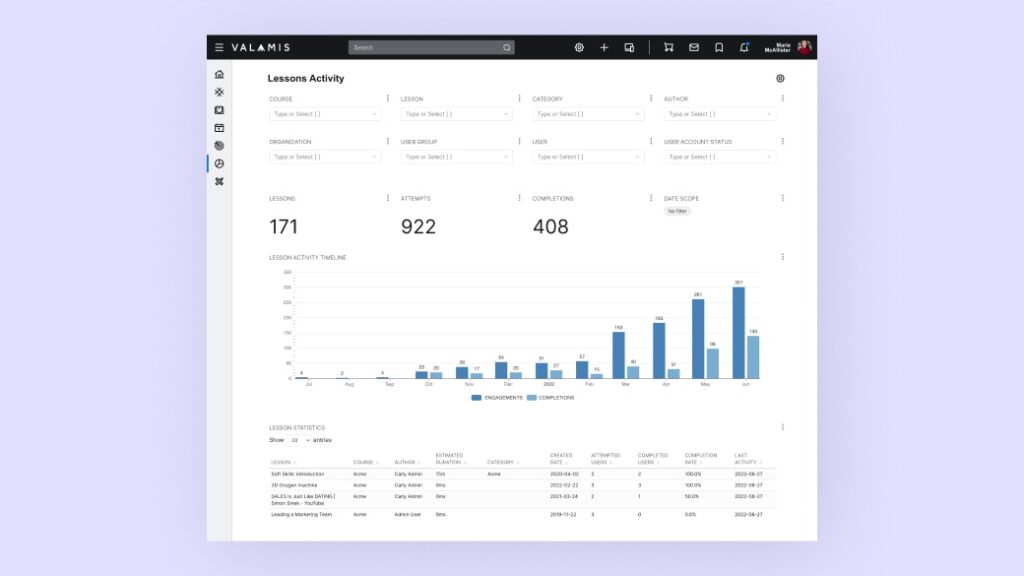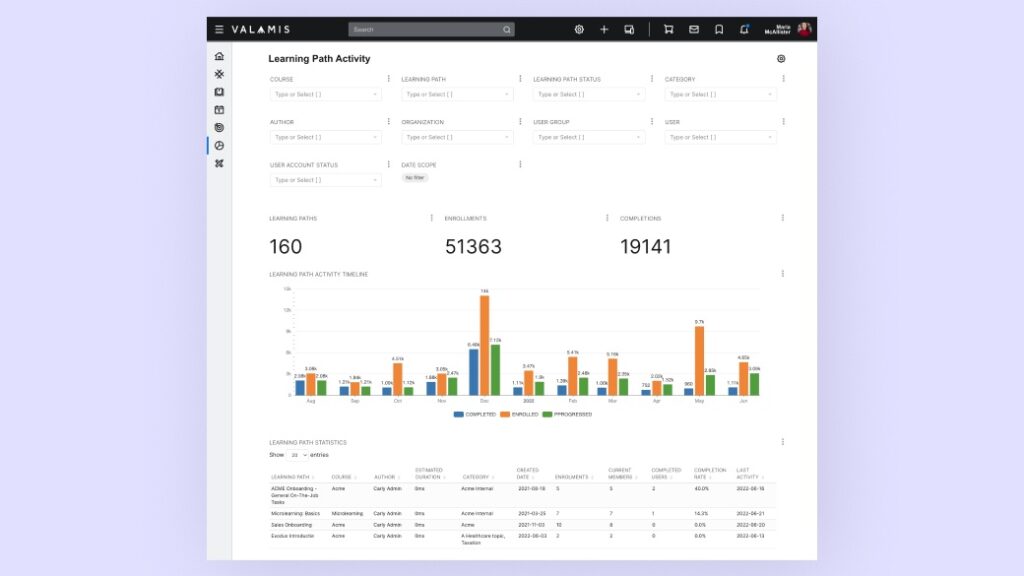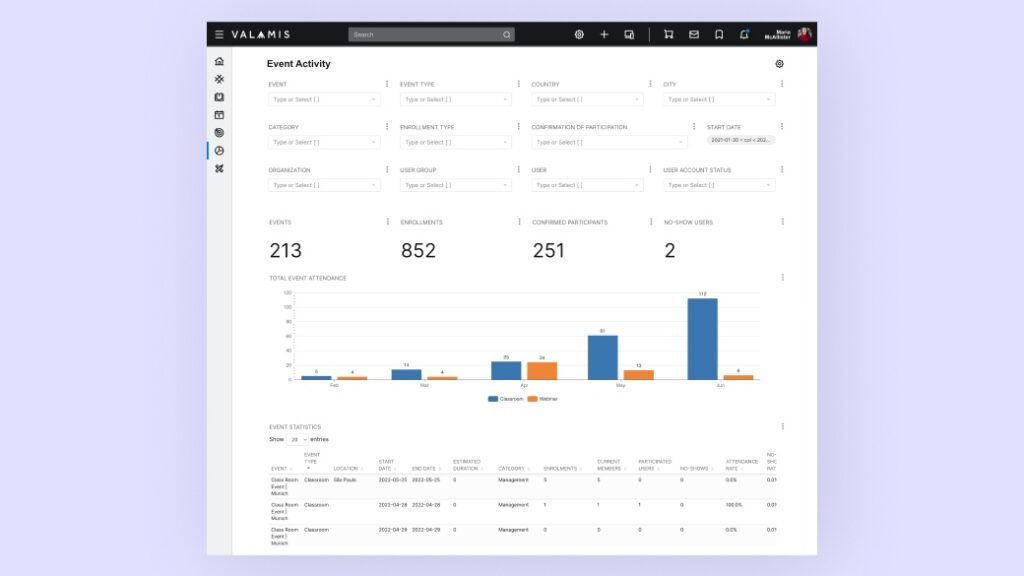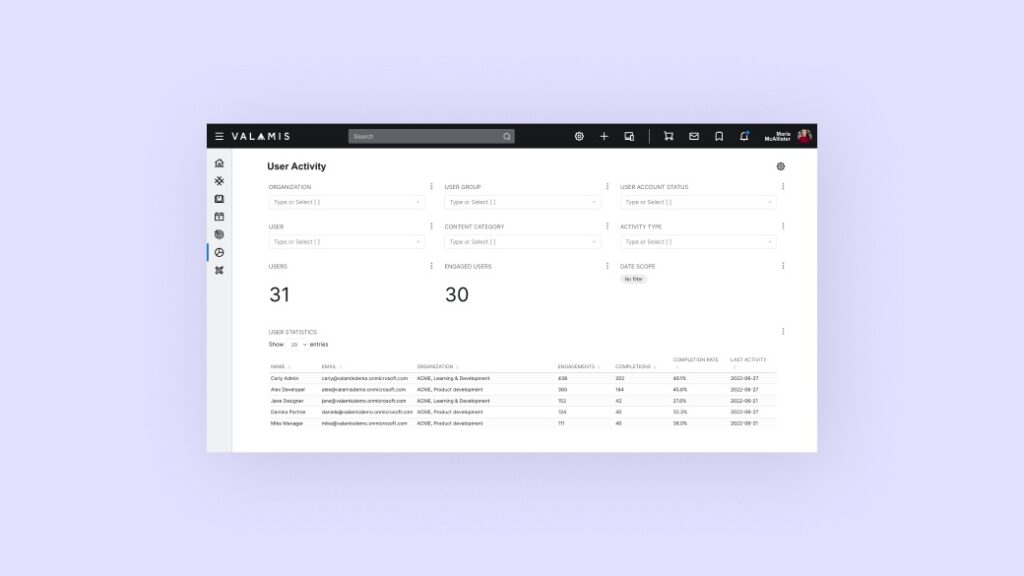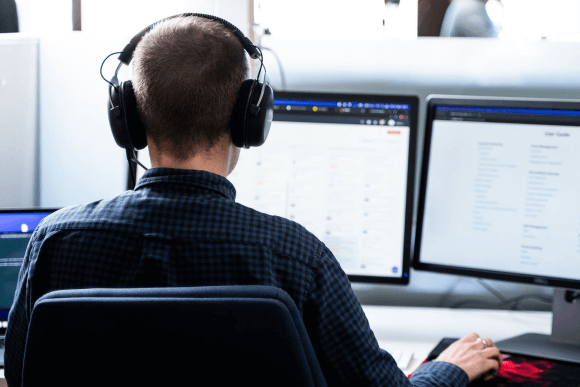LXP vs. LMS: which platform to choose in 2025?
There is a wide range of digital tools available to help employees learn in the workplace. Which should your organization choose?
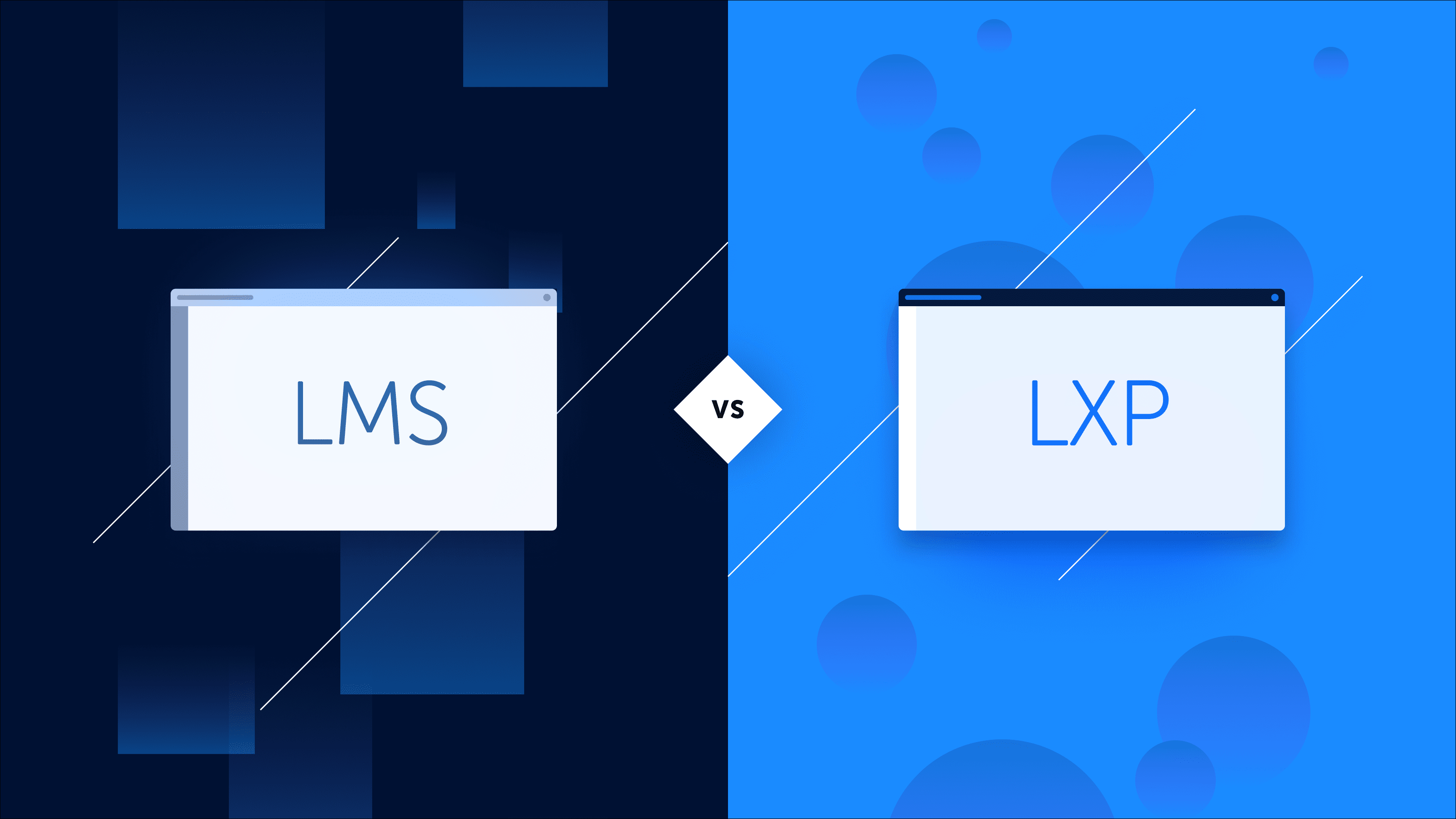
There is a wide range of digital tools available to help employees learn in the workplace. Two popular options are learning management systems and learning experience platforms. While closely linked, these two types of software promote very different ways of learning. So, which should your organization choose?
In this blog, we will primarily discuss the general differences between traditional Learning Management Systems (LMS) and Learning Experience Platforms (LXP).
It’s important to note that many modern learning platforms now combine capabilities of both LMS and LXP (the good example here is Valamis).
Our aim is to cut through the marketing hype and help you understand what you truly need from a learning platform.
In this blog, we will cover:
LMS vs. LXP. What is the difference?
A learning management system (LMS) refers to a system or software for creating, managing, tracking, and distributing educational content.
Think of an LMS as a digital repository or library containing all of an corporate training content. Administrators search what is available and find the best material for their L&D aims. This level of control is particularly beneficial for organizations looking to implement a top-down learning model.
A learning experience platform (LXP) provides the tools needed to build personalized learning experiences driven by employees.
While there is some crossover between the two L&D tools, there are also significant differences. Below we have separated these differences into five key factors.
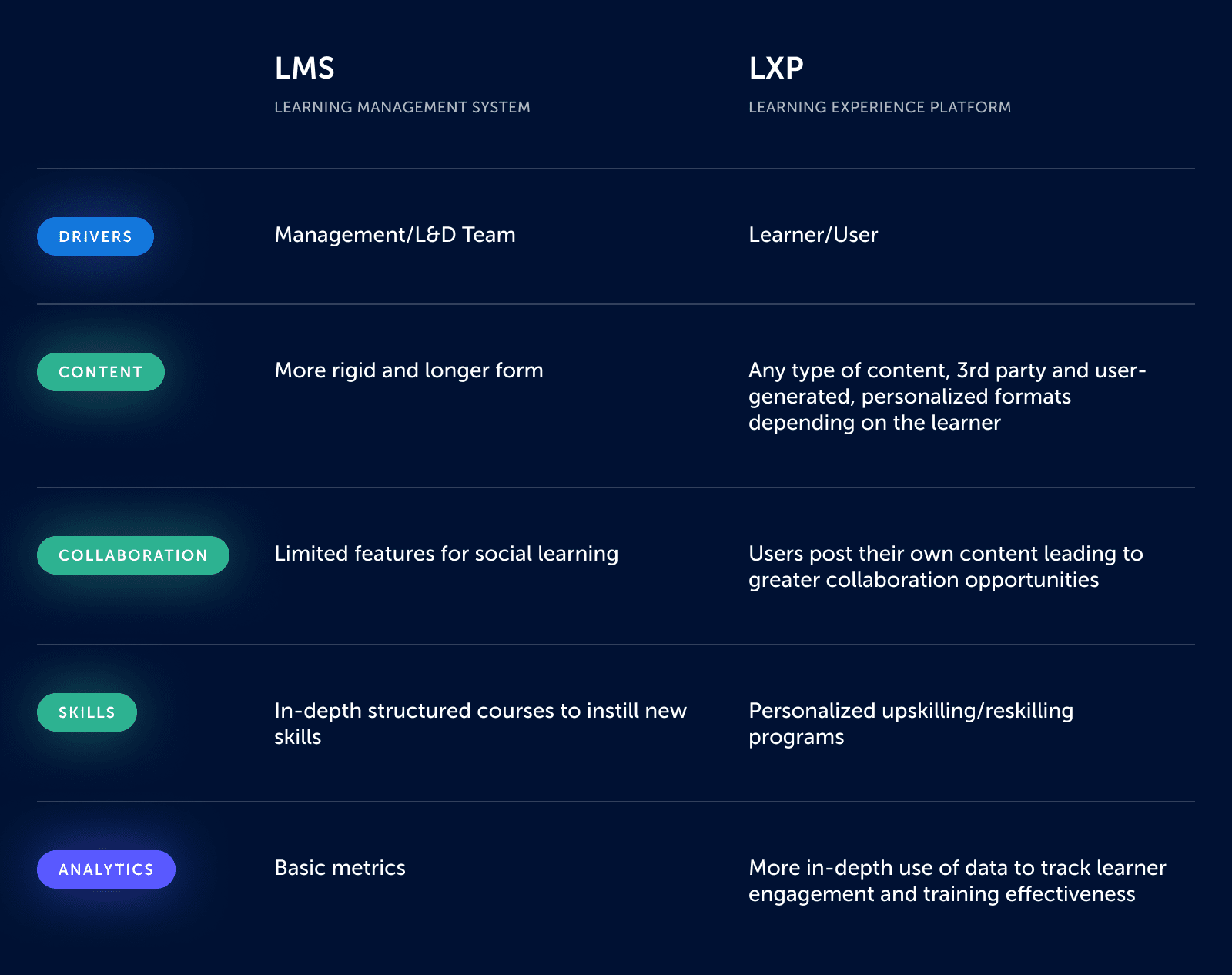
#1 Drivers
Drivers are the people who lead the learning experiences at an organization, setting goals and managing what employees learn.
LMS:
LMSs put management in the driving seat. Whether it is the HR team, L&D staff, or someone in leadership, utilizing an LMS means the people in authority choose what employees should learn. They upload the courses, oversee the content available to learners, and approve user-generated posts.
Employees typically have little choice in what they learn. Once assigned, they must complete a course or training program. This makes LMSs effective for company-wide requirements such as mandatory compliance courses.
LXP:
In contrast, when using an LXP, everyone shares and creates educational material. It doesn’t mean that HR and management are not involved. They can recommend content and post on the platform the same as anyone else in the organization.
Examples of learning with an LXP could include a sales manager wanting to develop a new course to improve the organization’s conversion rates. LXPs offer all the authoring tools they need to build a bespoke training program designed specifically with their goals in mind. They can also add links to a range of online content to supplement the course. This could include engaging blog posts, podcast episodes related to the topic, or even YouTube videos on the subject.
You can think of the difference in terms of push vs. pull learning. An LMS works by pushing learning onto employees, whereas an LXP focuses on pulling learners into continuous learning through personalized content.
While LMSs help produces a consistent learning experience, critical for onboarding and compliance training, LXPs help employees generate engagement and enthusiasm for learning from within. Many organizations are looking for this engagement to help upskilling and reskilling programs and improve the company’s overall agility.
What experts say:
“An LXP is different from an LMS in that it is typically positioned as a self-paced product rather than a product that needs to be pushed to the end learner. Statistics show that learners only spend time in the LMS when learning is specifically prescribed.” – Alex Devers (Partner Manager, OpenSesame)

Checklist on how to choose the best LMS
The checklist will keep your focus on what really matters when choosing an LMS.
Download#2 Content
Content describes the material that is delivered to learners.
LMS:
As we’ve described, LXPs and LMSs promote different learning styles and sometimes utilize different types of content. Generally speaking, an LMS is more likely to offer rigorous, longer-form training courses for learners to work their way through. The organization tracks employee progress and often incorporates some form of assessment at the end.
However, it is common for both systems to deliver the same content. What is different is the way content is curated. The organization’s L&D staff primarily creates LMS content.
LXP:
LXP content can be curated from many sources, including third-party providers, to make a personalized learning experience for each employee.
With users able to post educational material on the platform, LXPs effectively act as content aggregators with a much more diverse set of resources. They can contain a vast array of externally sourced and user-generated material.
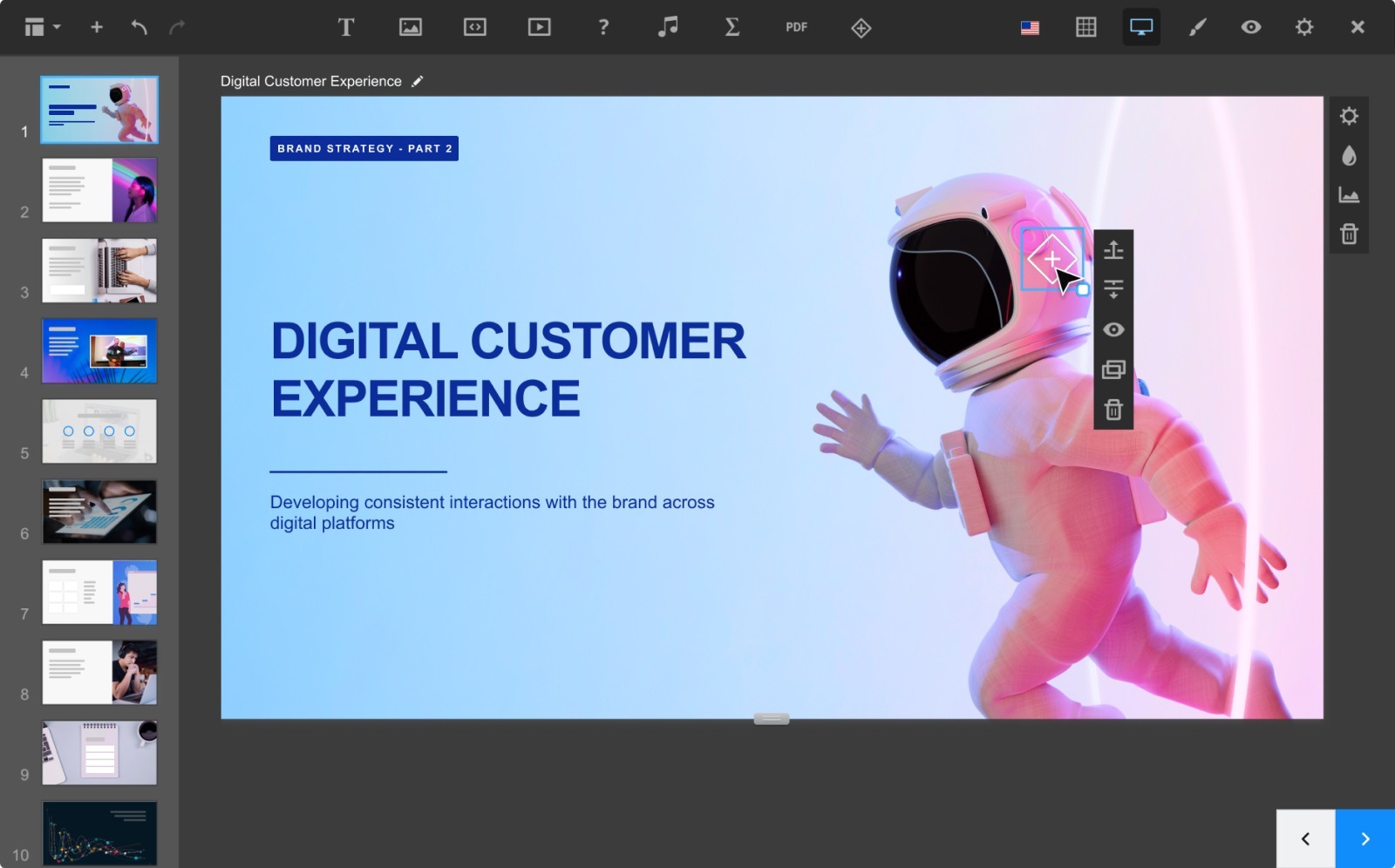
With content authoring capabilities in the Valamis Learning Platform, organizations utilize user-generated content. Each employee can easily create learning modules and share knowledge.
#3 Collaboration
How the tools promote interactions between different learners and between the administrators and learners.
LMS:
For the most part, LMSs offer little collaboration functionality. They act as a management system, with information flowing in a single direction, from management to the learners.
LXP:
On the other hand, utilizing LXPs and allowing users to post their own educational content increases collaboration. Staff members become active participants looking to share and discuss ideas with their fellow employees rather than passive students being forced to follow a specific course.
Collaboration and social learning are great ways to boost engagement and improve knowledge retention. Getting involved in discussions and hearing multiple opinions on a topic helps employees think deeper about new concepts and get to the crux of a subject.
What experts say:
“An LXP provides learners with a robust learning experience by bringing together all types of learning activities in one central place and offering personalized recommendations and a social component to self-paced learning.
I see the LMS as a much more structured, somewhat limited environment. Although an LXP can still provide structured learning, it also provides flexibility. I think personalization is a key component that you don’t get with an LMS. The ability to enhance self-paced learning with a social component could increase learner engagement and retention.” – Rebecca Gonzalez (Head of Global Learning Design, Amadeus)
#4 Skills
The outcome of learning, regardless of the platform used, is the skills employees learn that can become beneficial in their work.
LMS:
With the widespread adoption of new technologies across virtually every industry, organizations have recently shown increasing focus on redeveloping their employee skill sets. Competing in the modern business world requires significant digital skills, and there is a growing gap between what organizations need from their workforce and what is available on the job market.
With that in mind, they are turning to L&D initiatives and finding ways to develop new skills in-house from their own workforce. Both LMSs and LXPs offer benefits when trying to build employee skill sets. An LMS platform provides in-depth, structured training programs that management can monitor to determine employee success.
LXP:
LXPs allow management to hone in on specific skills training for each employee and offer personalized material to keep them engaged and motivated. With improved analytics and reporting, LXPs are better suited to determine the skill gaps holding back specific employees.

Is your company set for a digital learning solution?
You can quickly assess strengths, weaknesses, and areas for improvement with the template.
DOWNLOAD checklistWhen implemented successfully, LXPs can oversee the process of formalizing upskilling and reskilling programs, recommending the educational material best suited for each employee. However, this often requires a thorough upload and tagging procedure to ensure employees can gain the in-depth knowledge needed to master a new skill.
What experts say:
“LXPs are single-point-of-access, consumer-grade systems composed of integrated technologies enabling learning.
They can do many tasks, such as curating and aggregating content, creating learning and career pathways, enabling networking, enhancing skill development, and tracking learning activities delivered via multiple channels and content partners.” – Janet Clarey (Lead Advisor, Technology & Analytics, Bersin, Deloitte Consulting LLP)
#5 Analytics
The process of analyzing and interpreting employee data and determining patterns that can enhance their learning experience moving forward.
LMS:
While LMSs allow leadership to manage and track training programs, LXPs typically have more in-depth analytics. An LMS may only track basic metrics such as the number of completed courses, assessment scores, or drop-out rates. While some LMS solutions offer additional analytics, this is not standard.
LMSs will provide a series of pre-built reports, including:
- Course completion reports: the percentage of learners completing a particular course.
- Learner progress reports: insight into each learner’s progress through a course; this could include the number of attempts, time spent, and assessment scores.
- Assessment reports: information on learner performance based on assessments.\Compliance reports: the compliance status of learners for specific courses or training programs.
LXP:
Another driver for the emergence of LXP’s is the standards adopted by modern-day LMS’s – which are SCORM-based. While SCORM does “get results”, it is limited in what it can do. One of the main goals of any corporate learning platform is to connect learning with on-the-job performance. And SCORM makes it very difficult to decide how effective the courses really are, or how learners benefit from these courses.
Experience API (xAPI) on the other hand – the standard embraced by LXPs – offers significantly enhanced capabilities to the platform. When you use xAPI, you can follow different parameters both while you learn and perform on the job tasks. And, what’s even better is that you can do that on a variety of digital devices.
This allows you to track how learning influenced employee’s performance. For instance, with these new standards, you can now:
- Capture data from a vast array of sources
- Track learners activity via simulations and VR sessions
- Track where and how your employees learn (what devices they use)
- Assess to see how learners absorb the information in the course
- And most importantly, you can do all of this (and more!) using any device – so long as it can connect to the LXP either directly or remotely
All these advantages help you understand whether your training is truly effective and how it influences the work that people perform, which makes it easier to calculate ROI.
xAPI helps you understand what works and whether it makes sense to invest in something you wanted to invest originally and what should you really invest in
Typical reports available in LXPs include:
- Engagement reports: insight into how learners engage with the platform, such as the number of logins, time spent, and content consumed.
- Personalized learning paths reports: the progress of learners on their personalized learning journeys and the recommendations for future learning activities.
- Social learning reports: how learners are engaging in social learning activities, such as discussions, collaborations, and knowledge sharing.
- Skill gap analysis reports: the skills gaps of learners, based on their learning history and performance.
What experts say:
“An LMS is more limited than an LXP in terms of the types of learning data and learning experiences it can capture. Using an LXP provides a broader picture of employee learning and collaboration.” – Pam Hogle
“LXPs use artificial intelligence (AI) to collect and analyze data on learners’ interactions and make content recommendations based on that data.” – Danielle Draewell (Market Research Analyst, Training Industry, Inc.)
Choosing between an LMS and LXP
Both LMSs and LXPs are great tools to enhance employee learning in the workplace. While an LMS can catalog formal educational content, LXPs enable sharing of user-generated material and the personalization of the learning journey.
An LMS helps ensure everyone receives a baseline level of knowledge, and an LXP differentiates each employee to find material that matches their existing skills.
Both tools have benefits in the modern workplace. If you’re unsure which is a better fit for your organization, it is a good idea to consult with learning technology specialists such as Valamis. By discussing your L&D needs and discovering what is available, you can make the best decision for your team.
The complete Valamis learning solution combines LMS and LXP capabilities and everything you need into a single platform. Store all your formal training material in a traditional LMS while incorporating the personalized learning paths, social learning, and content authoring of a modern LXP. Get in touch today and see how Valamis could transform your learning ecosystem.
Discover 8 Business Benefits of a Complete Learning Solution
See it in action
Book a demo call now and let us help you connect the dots between learning and business success.
Book a demo now!
